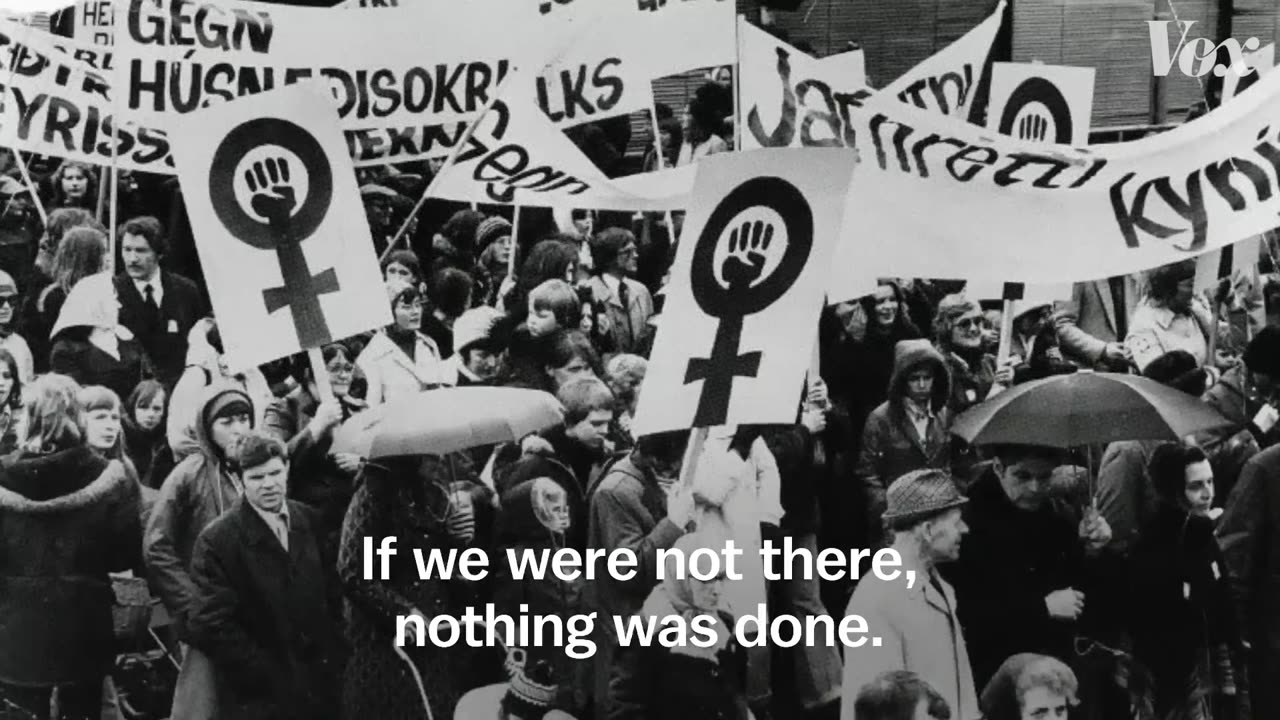Premium Only Content

The day women shut down Iceland
Iceland has made significant progress with its gender pay gap in the past 50 years. In 1975, Icelandic women made around 40 percent less than what men made. Today, that number is around 10 percent, making Iceland one of the few countries in the world where women are paid almost as much as men.
To understand how Iceland made so much progress, you have to take a look at what happened almost 50 years ago. In 1970, a radical feminist group called the Redstockings formed in response to outdated ideas in Iceland surrounding issues like violence against women, reproductive rights, and women’s labor. The Redstockings were known for their loud and public demonstrations, and in 1975 they proposed their biggest idea yet: a women’s strike. A day when women would collectively refuse to work at home and in the office to prove their economic worth to society.
The idea was divisive at first, but slowly, women from different political backgrounds got on board. To make the idea more accessible, they changed the name to “Women’s Day Off,” or “Kvennafrí,” and planned the strike from the ground up. It was a massive success. An estimated 90 percent of Icelandic women refused to work that day, and it shut down the country. Flights were canceled without flight attendants, and schools were closed without teachers. Men had to bring children to work because there was no child care at home.
The effects of Kvennafrí were felt across the country. Iceland quickly passed its first Gender Equality Act and soon after elected its first female president — and the world's first woman to be elected democratically. In this episode of Missing Chapter, we walk through how Icelandic women shut down their country, and talk to one of the women who helped do it.
-
 3:44:24
3:44:24
Barry Cunningham
8 hours agoBREAKING NEWS: LIVE COVERAGE OF NEW YORK POLICE OFFICERS UNDER SIEGE!
99.1K74 -
 2:51:25
2:51:25
The Pascal Show
5 hours ago $2.01 earnedBREAKING! Active Shooter In Midtown Manhattan NYC Multiple People Shot!
25.2K4 -
 10:25
10:25
MattMorseTV
10 hours ago $11.36 earnedVance just DROPPED a NUKE.
47.3K45 -
 5:05:09
5:05:09
Jokeuhl Gaming and Chat
8 hours agoDARKTIDE - Warhammer 40k w/ Nubes and AoA
22.5K2 -
 2:53:08
2:53:08
Shoriantrax
4 hours agoLIVE: Hardcore Chaos in Tarkov – Loot, Die, Repeat!
13.5K -
 4:47:16
4:47:16
John_Goetz
5 hours agoJohn Gets Gaming - Medal of Honor Vanguard Part 2
8.91K -
 1:29:09
1:29:09
RiftTV
7 hours agoSydney Sweeney Spreading RACIST Propaganda? | The Rift | Guest: Braeden Sorbo + Sarah Stock
40.8K12 -
 4:08:44
4:08:44
VapinGamers
6 hours ago $0.03 earnedDestiny 2 - The Premium Destiny 2 Experience with the Community! - !rumbot !music
4.54K -
 2:36:01
2:36:01
We Like Shooting
18 hours ago $0.35 earnedWe Like Shooting 621 (Gun Podcast)
3.78K -
 2:06:45
2:06:45
PudgeTV
11 hours ago🔵 Mod Mondays Ep 69 | Grimm Hollywood - The 3k on Mod Mondays
14.3K3